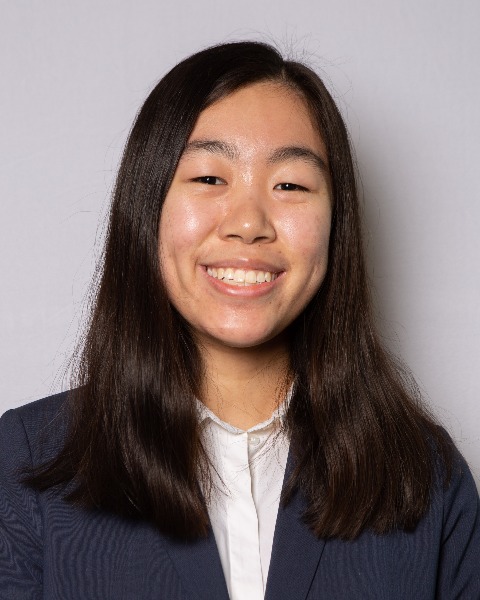Nano and Micro Technologies
Investigation of Fabrication Methods of Liquid Core Ultrasound Contrast Agent
(J-384) Investigation of Fabrication Methods of Liquid Core Ultrasound Contrast Agent
- JD
Jinyang Du (she/her/hers)
Undergraduate Researcher
Weldon School of Biomedical Engineering, Purdue University
West lafayette, Indiana, United States - KA
Karla I. Alvarado, Bachelor of Science in Biomedical Engineering
Undergraduate Researcher
Weldon School of Biomedical Engineering, Purdue University
West Lafayette, Indiana, United States - CB
Claudia Benito Alston (she/her/hers)
PhD Candidate
Weldon School of Biomedical Engineering, Purdue University
Lafayette, Indiana, United States 
Siting Zhang, BS (she/her/hers)
Graduate Student
Weldon School of Biomedical Engineering, Purdue University
West Lafayette, Indiana, United States- LS
Luis Solorio, PhD
Professor of Biomedical Engineering
Weldon School of Biomedical Engineering, Purdue University, United States
Presenting Author(s)
Co-Author(s)
Primary Investigator(s)
Medical ultrasound imaging is a widely used diagnostic technique for visualizing internal organs and vasculature. However, it possesses a limited contrast resolution which can impede the accurate identification of structures. The advent of ultrasound contrast agents (USCAs) has increased contrast and improved the diagnostic power of ultrasound imaging. Although gaseous-core USCAs have been approved for clinical use, liquid-core USCAs have demonstrated higher echogenicity and stability. Therefore, there is a need for liquid core USCAs, and their optimal manufacturing method remains to be discovered.
Materials and Methods:
This project aims to identify the optimal manufacturing methods, including shaking by VialMix, double syringe technique, ultrasonic dispersion, and ultrasonic waterbath, to fabricate lipid-shell and liquid core USCA with an optimized function. The lipid shell consists of a combination of DPPA, DPPE, and DPPC, while perfluoro-pentane (PFP) is employed as the core liquid. This study will assess size and monodispersity by using DLS, echogenicity by using ultrasound imaging, as well as cytotoxicity and cell uptake using adipose derived stem cells (ASCs) to compare nanospheres made through different methods. In addition, this study will further determine the relationship between dose and viability in-vitro by using the optimal liquid core USCA.
Results, Conclusions, and Discussions:
The ultrasonic waterbath method produced the smallest nanospheres (average diameter 199.2nm with 41.03nm standard deviation) compared to shaking, double syringe technique, and ultrasonic dispersion methods, as shown in Figure 1 (B). Ultrasound imaging of the diluted nanosphere samples showed increased echogenic intensity compared to the control group (BPS), indicating improved echogenicity with the ultrasonic waterbath method (brightness intensity: pure BPS 19.23, 1:25 diluted sample 77.85, as shown in figure 1 (C). In conclusion, the ultrasonic waterbath method demonstrated superiority in producing small and highly echogenic nanospheres for liquid core USCA. This suggests its potential to enhance diagnostic capabilities in ultrasound imaging. Further investigation is ongoing to assess the in-vitro cytotoxicity and cell uptake, providing more comprehensive insights into safety and biocompatibility. These findings contribute to advancing liquid core USCA, bringing us closer to optimized and clinically valuable contrast agents for ultrasound imaging applications.
Acknowledgements (Optional): :
References (Optional): :
